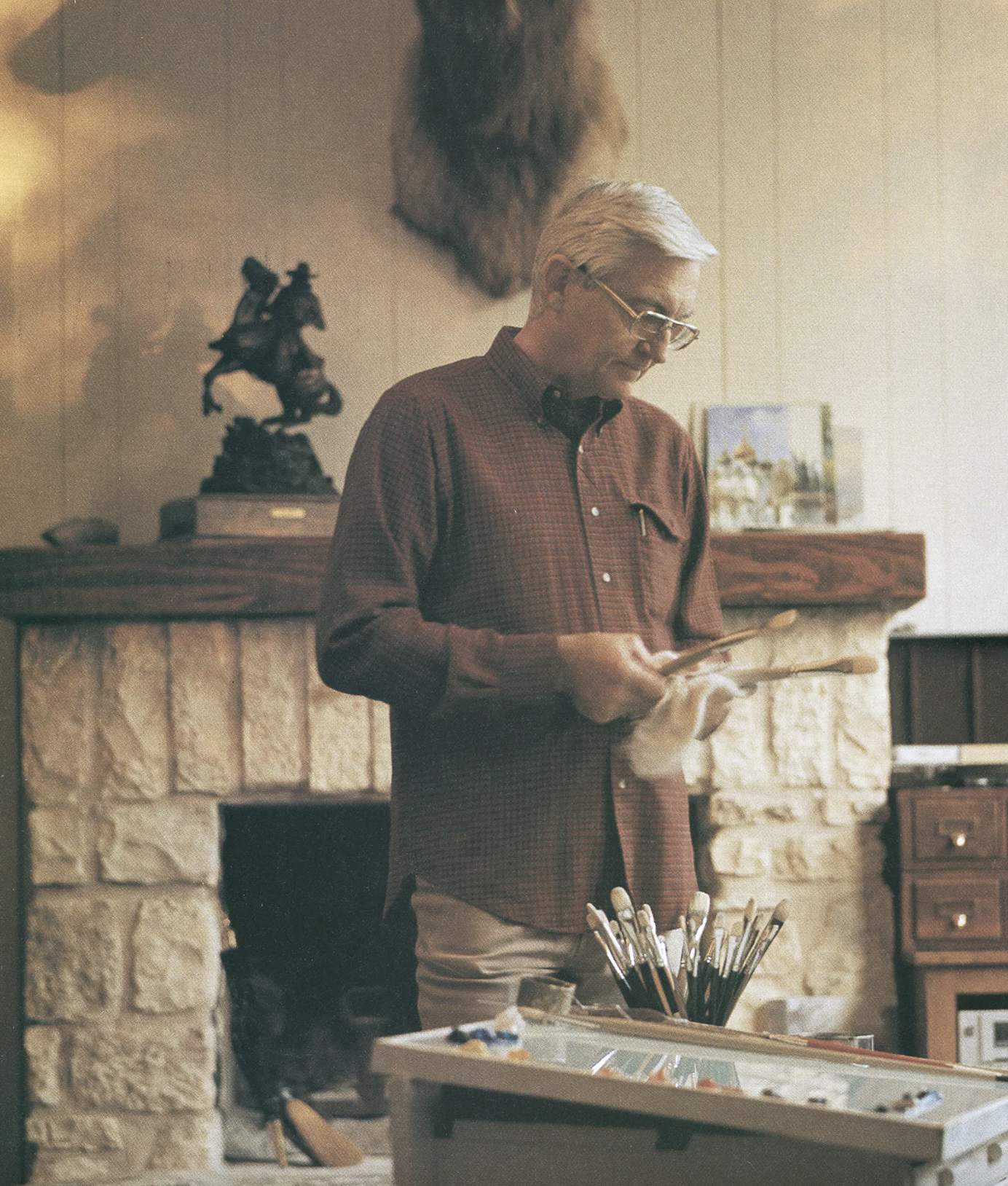Gerald Harvey Jones, a native Texan, loved to hear his grandfather tell of trail drives and his father’s talk of boomtowns. He spent countless hours studying cattle and horses in action on ranches throughout his life and loved to bring them to life in his works. After graduating from North Texas State University in 1956, he and his wife, Patty moved to Austin where he worked as a teacher during the day and painted at night using their bedroom for studio space. Between 1957-58 he shortened his signature to G. Harvey, and by 1963 his work could be found at art fairs and galleries around Texas. In 1964 they took a leap of faith that God would provide if Gerald would commit to painting full time. In 1972, he published his first limited edition prints of his original paintings. During the next 43 years, over 140 of his original paintings were reproduced as limited-edition prints, lithographs, serigraphs, or giclee’s (graphics). Many of these graphics sold out within the first year they were published. In short, God provided, and today collectors of his originals, sculptures, and graphics of his work have also been blessed by that commitment to follow his dream of creating art full time. G. Harvey’s early works concentrated on the landscapes and peoples of Central Texas, the Panhandle, New Mexico, and the Border. His works went beyond the specifics of subjects and scenery to convey G. Harvey’s impressions—his concern with our heritage, with how our ancestors faced the challenge of change, with the importance of love for our friends, family and God that he saw as a central part of life. He was influenced by the French boulevard painters, Edouard Leon Cortez, Eugene Galien-Laloue, and Luigi Loir, who were active in the early 1900’s. He was one of the first American artist to apply their techniques of reflecting both natural light and the light generated from gas lamps, vehicle headlights, and street lights, to subjects found in the American landscapes, western themes, and popular cities.
There are common bonds that draw people to G. Harvey’s works. His subjects, compositions, and techniques that guide the viewer through his paintings are some of the components. These elements make his art attractive to the eye, but there is more. Leo Tolstoy described it best when he wrote about true art occurring when all of the emotions of the artist’s efforts result in a work of art that can be understood without interpretation. Harvey’s collectors of his original works and reproduced graphics don’t “interpret” what the artist was painting, they feel what G. Harvey was feeling when he painted it.
In the early 1980’s, G. Harvey was fast becoming one of America’s favorite artists when most of his original work was sold in Texas. Since then, every one-man show in Texas, Wyoming, Arizona, and California sold all of his original paintings within the first few hours that his work was made available. His popularity was furthered by exhibitions at the National Archives, The Treasury Building, and Smithsonian Institute in Washington D.C. during the 1990’s. His impressionistic mix of America’s turn-of-the-century rural western scenes and cityscapes as well as quiet glimpses of European scenes became popular as collectors gravitated to his art. His art struck a chord with people across the United States and around the world as he hearkened back to simpler times – times when virtues such as faith, courage, patriotism, hard work, and compassion were revered. Socrates believed that art should reflect the divine order and encourage virtuous behavior. G. Harvey’s art reflects all of that.
The artist has received numerous awards for artistic merit and recognition for his contribution to the arts. Among those, he received lifetime achievement awards from the Booth Western Art Museum in Cartersville, Georgia, and the Dolph Briscoe Museum in San Antonio in 2009. His works are in private, corporate, and museum collections throughout the U.S., Europe, and Southeast Asia. G. Harvey completed his last painting in the fall 2015 and joined his Savior in heaven in November 2017.
